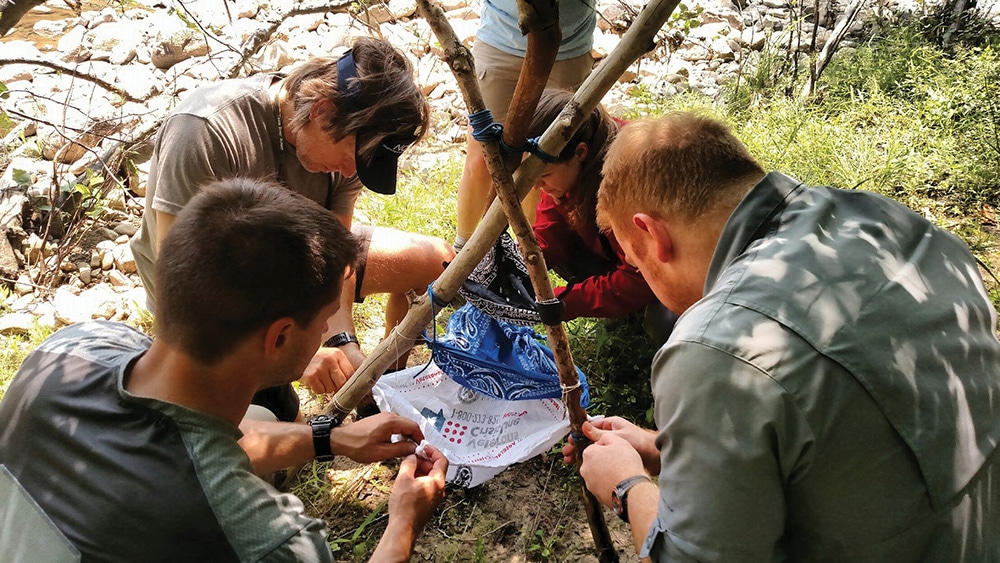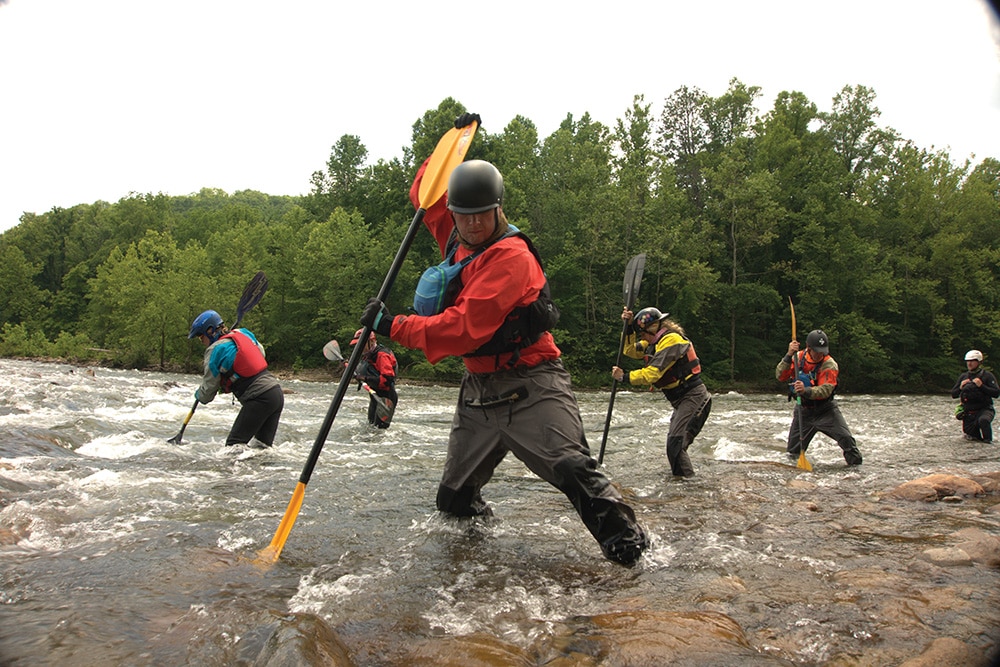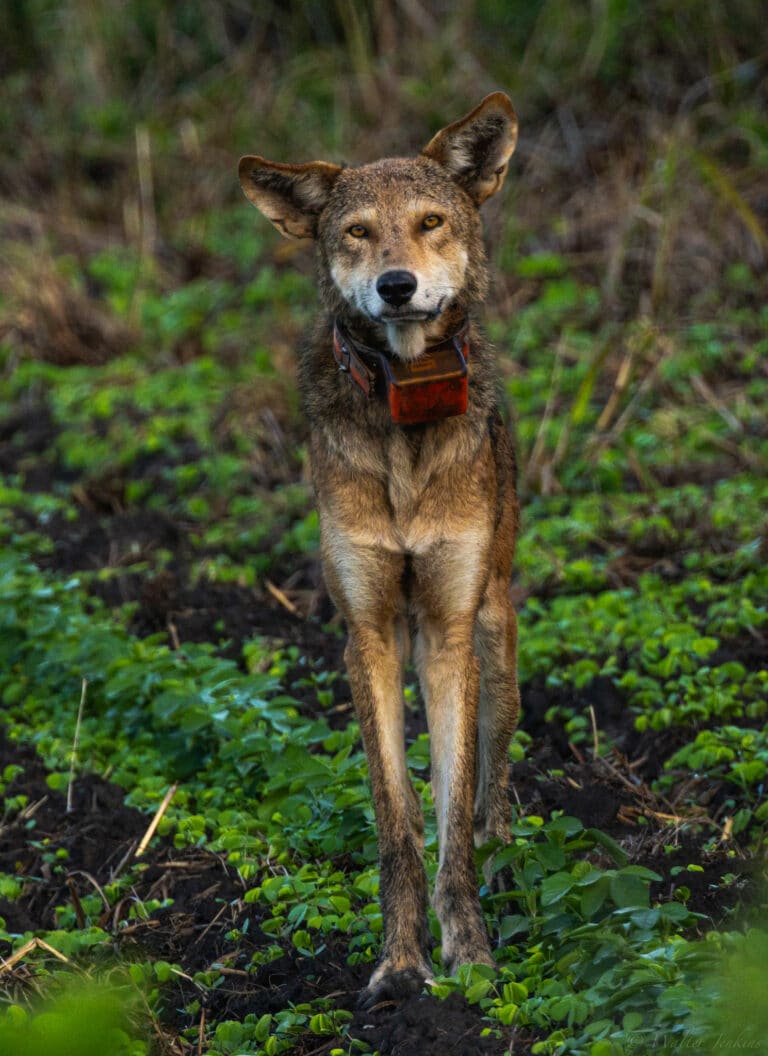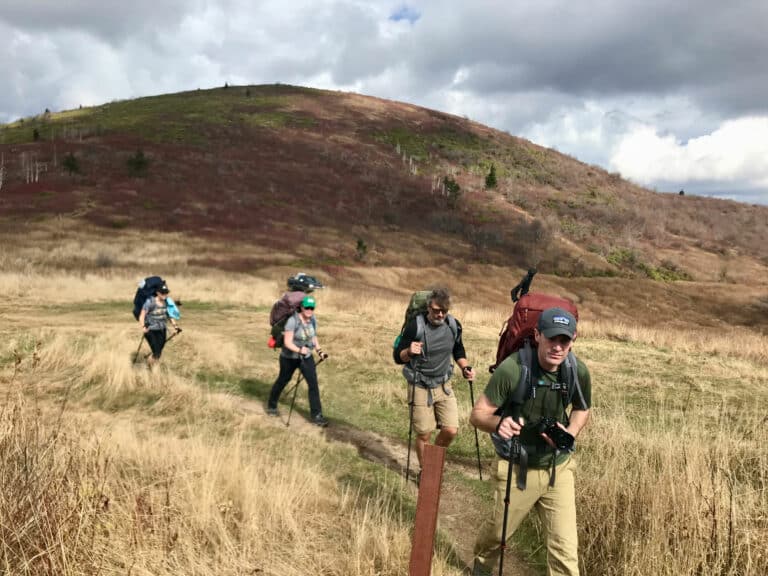An Outdoor School in the Tennessee Mountains Sharpens an Avid Explorer’s Wilderness Skills
It’s a gorgeous September Sunday in Erwin, Tenn., and the Nolichucky is brown and foaming with the night’s rain. I’m sitting on a stage, close enough to the river to watch ashen-faced adults planted in inner tubes go spiraling past. But it’s Scott Fisher, masked and sanitized and leading a class on wilderness navigation, who has my attention. The founder of the Nolichucky Outdoor Learning Institute (NOLI), Scott is a former Ranger-qualified infantry officer in the Army’s famed 101st Airborne Division, but with his blonde hair and calm smile—easy to discern even behind by a blue surgical mask—you get more of a surfer vibe. That, or the sort of endurance athlete you might find racing across Fiji in Bear Gryll’s Eco-Challenge. So it comes as no surprise to learn he helped train Team Unbroken, a sentimental favorite featuring two combat-wounded veterans in Amazon’s “World’s Toughest Race.” I’m here at the behest of my twelve-year-old son who came back from an August survival course on fire about, well, making fire (with a Ferro rod, of course). He also came back with a stunning awareness of plants and wildlife and how to ford a river safely.
“How long were you gone?” I asked him.
But I knew the answer: about eight hours.
“It’s Scott,” he told me. “He can teach you anything.”
I’ve come to the sprawling campus of cabins, tent sites, and fire rings to not only put my son’s claim to the test, but to check out the latest offering in the world of outdoor education. NOLI shares space with USA Raft and the Nolichucky Gorge Campground, and as six of us gather on the stage with our notebooks and REI chairs, Scott comes bounding up. We range in age from senior citizens to my son, but all of us look a little nervous. I’ve spent my life in the woods, trail-running and backpacking—I even had four years of college ROTC—but land nav? It sounds like a lot of math to me. Then I remember I’ve been leading my family astray on day hikes a bit too much lately. I love Daniel Boone’s line that he was never lost, though he was once bewildered for three days, but perhaps I’ve been quoting it a bit too frequently.
Scott passes out topographical maps and compasses.
“Who here is a little uncertain about this?” he asks, and smiles behind his mask as six hands go up.

NOLI was founded in 2018 with a mission to “celebrate the outdoors and help others do the same.” They offer classes that cover the gamut of outdoor activities from wilderness first aid to whitewater kayaking to cooking in a Dutch oven. The survival course, held on an island in the Nolichucky, delves into shelter, knot-tying, rescue signaling, and, of course, the importance of a positive mental attitude. “PMA” may be the most impressive thing my son brought back from his day-long survival course, and no wonder: it’s a vibe that pervades NOLI. The campus feels like a cross between a summer vacation and a commando school: there’s real teaching going on all around me, and everyone seems to be loving it. During a break, my head swimming from counting index lines, I wander past tents and RVs over to the Take-Out Bar where two women wait patiently for their YeeHaw beers. That excellent local beer is on tap is a comforting sign, and looking up at the mountains around me, hearing the squeals of children in passing rafts, it occurs to me that this is the best of the Southern Appalachians: wild, open, and wonderfully hospitable.
The Nolichucky—an Anglicized version of the Cherokee word for either “rushing waters” or “Spruce tree place”—flows 115 miles from the confluence of the Toe and Cane Rivers in western North Carolina into eastern Tennessee where it eventually runs into the French Broad. It’s relatively wide and calm as it passes NOLI, but the Nolichucky Gorge nearer the headwaters is one of the Southeast’s most exciting whitewater runs. It’s a moody river, but whether flat or raging, every inch appears beautiful. One of the loveliest views in the area is from the Appalachian Trail that runs parallel to and just above the opposite bank. You can hike south from Uncle Johnny’s Nolichucky Hostel, one of the trail’s more famous stops, and within a half hour be on the ridge. The view here is nothing less than majestic: the river a blue vein snaking its way through the green mountains, all of it beneath the sort of wide imprudent sky you imagine belonging not in Appalachia but the American West. And while I love the green velvet of late summer, it’s impossible not to imagine the colors that will paint these slopes when the leaves begin to change in a few weeks.
The water, the nearby Appalachian Trail, even the volleyball game playing out on the sand court—all of it little more than a mile off I-26 and thus eminently accessible.
I have to get back to class, but not before pausing to watch a course on standup paddleboarding happening not on the river but on a spring-fed pond beside it. It’s a reminder that Scott isn’t alone in this endeavor. NOLI employs nine other instructors, each with an impressive resume of certifications and experiences. Kayla Carter is a certified LNT Master Educator who hiked the entire A.T. in 2014. Robin Pope is a level five instructor, trainer, and educator in swiftwater rescue and river kayaking. Jerry Smith is a professional firefighter certified to teach wilderness first aid, CPR, Basic First Aid, oxygen administration, and AED. The rest are equally impressive, and, if other students are to be believed, as gifted as teachers as Scott.
Glenda from Kingsport has taken courses from kayaking to first aid and tells me that at NOLI, “it doesn’t matter about your age or your ability. You’re welcomed and taught and can understand anything.”
I take my seat back on the stage, pick up my clipboarded maps and compass, and pat my son on the shoulder. So far we’ve covered topographical maps, compass work, route finding…I’ve scrawled long division and percentages over the two pages of notes, and yes, it’s a lot of numbers. But it’s also starting to make sense.
“Probably the last of the math,” I tell my son, even if the reassurance is meant for me, and once again, I see Scott smile.
“All right,” he says. “Let’s talk declination.”
If finding our way without benefit of a GPS is a dying art, its death is being forestalled by a handful of outdoor educators and enthusiasts, and that’s something for which we should all be grateful. The truth is, much of what is being taught at NOLI and outdoor education centers all over the Blue Ridge are dying arts. I feel at home in the woods, but it’s not until that afternoon as we search for hidden green flags by shooting azimuths and pace-counting that I realize my sense of comfort is largely an illusion. I’m in the woods a lot, but rarely am I off a well-marked trail. I’ve spent a lot of time on whitewater, but I don’t actually know anything about swiftwater rescue. My trail cuisine usually consists not of Dutch oven cooking but of envelopes of freeze-dried fare courtesy of the chefs at Mountain House.
But as my son and I hustle through the forest, I realize I’m gaining at least a modicum of confidence in my ability to find my way. As we hunt down the last flag, I begin to compile a mental list of skills I intend to either sharpen or learn.
Turns out, my wilderness abilities are not unlike declination. If you’re not familiar with the term, declination is the difference between true north and magnetic north: if you don’t compensate for the variance you can be headed in mostly the right direction, but not exactly. As the class wraps up in late afternoon, I realize that if I’ve spent most of my outdoor life headed in the generally right direction, the time has come to be more exact, to learn the skills I’ve danced around or even ignored. It’s good to know that all of these skills are being taught by the good people at NOLI. That their campus sits in a beautiful and accessible place—serving excellent beer no less—makes a return all the more appealing.
“I hope you’ll both be back,” Scott tells my son and me as we pack up and head for our car. We’re both hungry and happily exhausted and it’s a quiet ride. We hang the right onto Highway 321 and skirt past Lake Watauga. It’s an easy drive, and after a day of navigating through the forest, we have no trouble finding our way home.
We won’t have any trouble finding our way back either.
Cover Photo: Swiftwater rescue is one of the many skills taught at the Nolichucky Outdoor Learning Institute. Photo courtesy of NOLI








